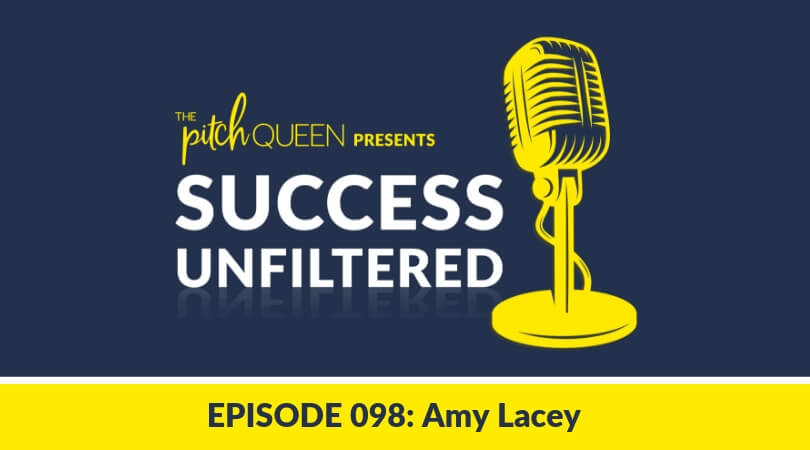
How do you tackle your business problems and challenges?
Do you start with the easiest problems, and then work your way up to the hardest problems to solve?
Entrepreneurs often start with the easy problems, or the low-hanging fruit, then work towards the juicy fruit up at the top of the tree out of reach.
But what happens when you choose a different path? What happens if you set your sights on the hardest obstacles first?
Recently, at a ropes course in Los Angeles, my leadership group went straight for the biggest and scariest obstacle: a 60-foot pole that you had to climb, and then jump to a trapeze and then swing down to the ground! I don’t even like climbing a ladder in my own house to change a lightbulb, so my mind wanted to say NO let’s start on an easier obstacle!
However, we all said YES and completed that hardest obstacle first, and you know what? The rest of the obstacle course was much easier to conquer! We knew that we had conquered the biggest problem, and could face anything else that we came up against.
The same applies to business – start with the hardest problem, and you’ll know that you can solve any problem much easier after the hardest one is complete! In fact, it means that when you do hear a NO, you can pivot your business more easily to find your best YES!
This week’s guest on the Success Unfiltered podcast, Amy Lacey, started her business with the hardest product to make, and I firmly believe that it led to her explosive success!
When she faced her hardest NO, she knew that she had already conquered the hardest problem and challenge with starting with the most difficult product to produce, and she created the best YES for her business!
Turning a Personal Obstacle Into a Solution for the Masses
Amy Lacey was having a hard time.
A Lupus diagnosis and multiple other medical problems led to a constant arsenal of medications, many with side effects that Amy didn’t want in her life.
The doctors told her NO when she asked if there was another way to treat her disease.
When she experimented, she found that when she changed her diet and ate “clean” – no fillers, just whole, fresh food; her symptoms abated and she felt better. So she switched over to a clean foods diet and found that her health drastically improved. While her diseases were not cured, they became far more manageable.
One favorite food, however, eluded her: pizza. Her family would eat pizza every Friday night, and she found herself longing to enjoy it too. She’d order a salad for herself and would scrape the pizza toppings onto the salad. But that was unsatisfying – and it got expensive fast!
A little online research led her to a novel idea: cauliflower pizza crust. However, anytime she found it available for purchase, it was full of fillers and additives that she couldn’t eat without risking her health.
That led Amy to experiment and making her own cauliflower crust that she could eat. Many recipes online lamented the fact that fresh cauliflower could be hard to work with since the vegetable retained so much water. Often, pizza crusts made from cauliflower were soggy. A little experimentation with ingredients and techniques led her to a consistently great pizza crust!
Even her picky child, who never ate vegetables, ate and loved her pizza crust.
She began sharing it with others and found that many people loved it and wanted it – starting with friends and then at farmers markets. She found a clientele hungry and ready to buy what she had to offer: foods made with clean, fresh, healthy ingredients.
It was time to turn it into a business. That is how Cali’flour Foods was born.
Tackling the Hardest Obstacles First
Three products stood out to Amy as options for her business: zucchini noodles, or “zoodles,” cauliflower “rice,” or cauliflower pizza crusts.
The easiest option, of course, was the zoodles. However, Amy quickly rejected that – it was already easy enough to get! People could make their own quite easily.
Amy remembered the feedback of the customers at the farmers market; how they told her how much of a mess it was to make their own pizza crust from cauliflower, and how much they loved her product.
Making pizza crusts from cauliflower gets expensive and is difficult to produce: each pizza crust starts with a whole cauliflower. Amy was determined to find a way, and make it happen, and worked hard to create the perfect product.
When it comes to working with cauliflower, most companies work with powdered cauliflower product and fillers like rice flour, rather than fresh vegetables. Multiple times, Amy was approached to work on her idea with someone else – but they always wanted to change the product to include fillers.
Amy steadfastly refused; never wavering in her commitment to serving those who loved her new company, Cali’flour Foods. While more expensive than the competition, there was no compromise, and that was Amy’s goal.
At the suggestion of several people, Amy took Cali’flour Foods to an industry show, to sell the product to stores. In the New Brands pavilion, they caught one store’s eye: Albertsons.
This wasn’t just a regional stocking and producing opportunity, either. This would mean her product would be stocked nationwide! Everything was set up perfectly to be the YES that Cali’flour foods had been waiting for.
Then, one day, a call came, with a deep apology. Albertsons had been confused when they made the offer, thinking it was a different company with a similar (but cheaper) product: one that had the fillers that Amy refused to add.
Amy knew that she had a product her consumers would say YES to – but how to best get it to them?
Serving Quality Product to the People
After being rejected by Albertsons, Amy got a devastating call from her accountant: “You’re in the hole $269,000,” her accountant told her. “You’re going to have to figure something out.”
The company’s highest sales month had been about $7,000 to this point, and it was time to find a way to increase that – fast.
It looked like it could be the end of Cali’flour foods, but Amy decided it was time to try something new: eCommerce.
At this point, their local fan base had bought into the product and loved it. They had many repeat purchasers. Amy knew, that in her most frustrated moments, the stories of those who used Cali’flour Foods kept her going – would they be the right thing to help “hook” a bigger audience?
“Facts tell, but testimonials sell,” says Amy. This led them to reach out in their faithful user community to find someone who loved it, and they found an advocate in Jessie.
Jessie had turned to natural foods to help treat her autistic daughter’s symptoms, and while eating the Cali’flour pizza crust herself every day, lost 169 pounds within 1 year.
She was excited to simply tell her story about how her switch to clean, unprocessed foods changed her habits, and ultimately, her life.
The testimonial worked: the month they launched online, sales skyrocketed to $124,000 in one month alone. As more users discovered Cali’flour Foods, the testimonials accumulated, as those who wanted to eat healthier food found the brand.
A strong social media community arose, and ravenous fans ate up – literally – everything that Amy had to offer. They’ve since expanded their products to include pasta, flatbreads, and crackers.
Cali’flour Foods simply brought a product that served a community’s biggest need by solving a difficult problem.
Now, as Cali’flour Foods continues to grow, it’s expanding into stores, and growing. 2019 holds huge growth for the company, as Amy has big plans, hopes, and dreams for how she can serve those who love her product.
In Conclusion
When Amy launched her company, she could have started with an easy product, and grown from there. However, instead, she started with the most difficult product to master and produce.
This meant that when the company had to pivot and launched its eCommerce business, they were selling a product that met the greatest need! There was nothing like it on the market. That led to explosive success – no one else solved the same problem in the same way.
What problems are you solving in your business? Are these problems the “low-hanging fruit,” or the easy ones? What is holding you back from starting with tackling the hardest problem? Tell me in the comments.










